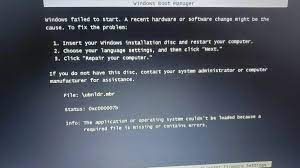Advertisement
Cover the latest innovations in AR and VR, including gaming, education, and enterprise applications.
Advertisement
Advertisement
Augmented reality (AR) and virtual reality (VR) technologies have come a long way since their inception. Today, they are not just confined to gaming and entertainment but have expanded to education and enterprise applications.
In this blog, we will cover the latest innovations in AR and VR technology and explore how they are transforming the way we work, learn, and play.
Gaming:
AR and VR technologies have revolutionized the gaming industry. With the introduction of VR headsets, gamers can now fully immerse themselves in a virtual world and experience gaming like never before.
Oculus Quest 2 is one of the latest VR headsets that has garnered a lot of attention from gamers. It offers high-quality visuals, an impressive selection of games, and a comfortable fit.
On the other hand, AR games like Pokemon Go and Minecraft Earth have taken the world by storm. These games use the real world as a platform, enabling players to interact with virtual characters and objects in the real world.
Education:
AR and VR have also transformed the way we learn. They provide an immersive and interactive learning experience, which can be especially beneficial in fields like medicine and engineering.
For example, medical students can use VR to practice surgeries and gain hands-on experience in a safe and controlled environment.
Similarly, engineering students can use AR to visualize complex structures and understand their working principles in real time.
Enterprise Applications:
AR and VR technologies are also making a significant impact on the business world. They are being used in various industries, including manufacturing, retail, and real estate. In manufacturing, AR is being used to provide real-time assistance to workers, helping them complete tasks more efficiently.
In retail, AR is being used to create interactive shopping experiences, enabling customers to visualize products in real time. In real estate, AR is being used to provide virtual property tours, giving potential buyers an immersive experience without having to leave their homes.
Other Innovations:
Apart from gaming, education, and enterprise applications, AR and VR technologies are also being used in other innovative ways. For example, museums and art galleries are using AR to provide interactive exhibits, enabling visitors to explore artworks in a more engaging way. Similarly, travel companies are using VR to provide virtual tours of holiday destinations, helping travelers plan their trips more effectively.
Healthcare:
AR and VR technologies are being used in the healthcare industry to improve patient outcomes.
For example, VR is being used to treat patients with anxiety disorders and phobias by exposing them to their fears in a controlled environment.
AR is being used to provide real-time assistance to surgeons during operations, enabling them to view patient information, medical images, and other data without having to look away from the operating table.
Sports:
AR and VR technologies are also being used in the sports industry to provide immersive experiences for fans. For example, NBA fans can use VR to watch live games and feel like they are sitting courtside.
AR is being used to provide real-time statistics and information during games, enabling fans to gain a deeper understanding of the game.
Architecture:
AR and VR technologies are being used in the architecture industry to provide clients with virtual property tours and 3D renderings. This enables clients to visualize their property before it is built, making it easier to make changes and modifications.
Entertainment:
AR and VR technologies are being used in the entertainment industry to create immersive experiences for audiences.
For example, Disney has created an AR experience called "Star Wars: Jedi Challenges," which allows users to experience lightsaber battles, strategic combat, and holo chess. Similarly, concerts and live events are being streamed in VR, allowing viewers to feel like they are at the event.
Automotive:
AR and VR technologies are being used in the automotive industry to improve the design and manufacturing process.
For example, car manufacturers can use VR to visualize car designs and make modifications before the car is built. AR is being used to provide real-time information to mechanics during repairs, enabling them to view parts and instructions without having to look away from the vehicle.
In conclusion, AR and VR technologies are being used in a wide range of industries, and the possibilities for their use are virtually limitless. As technology continues to evolve and become more accessible, we can expect to see more innovative uses in the future.
Advertisement




